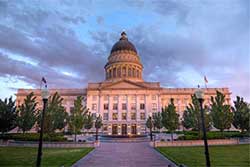Bankruptcy Terms Defined
There are a lot of confusing words out there relating to bankruptcy. Here are some definitions of some terms you should know when filing bankruptcy in Utah.
Creditors are anyone who is owed a debt. This includes loan agencies, credit card companies, medical institutions, etc.
The term debtor refers to anyone who owes a debt. You will often hear this in regards to a person filing bankruptcy.
A discharged debt is a debt that has been canceled due to bankruptcy. The judge will sign a “discharge order” at the end of the proceedings for your bankruptcy case. This piece of paper is federal authorization for your debts to be dissolved.
A means test is a form required by the courts to determine if your income falls within the guidelines of eligibility for different types of bankruptcy. If the means test shows that you make too much to file Chapter 7, then Chapter 13 filing is still an option, where you will make smaller payments to pay back just a part of your outstanding debt.
A meeting of creditors is a requirement for filing bankruptcy, both Chapter 7 and Chapter 13. This meeting typically takes only a few minutes and is rarely even attended by your creditors. Your trustee will be there, though, and will likely take the time to ask any remaining questions regarding your case and financial circumstances. You can expect to be called for this meeting around a month or a month and a half after filing.
Some debts cannot be eliminated with bankruptcy and you will need to keep paying them; these are called non-dischargeable debt. Common examples of these debts include many types of tax payments, government fines or fees, alimony and child support, student loans, and overpaid unemployment. Other than these, pretty much all other debt can be canceled through bankruptcy. Filing Chapter 13 is a very good option for paying off non-dischargeable debt at a more manageable payment scale.
Priority debt, namely taxes, is the kind of debt that gets paid back first after bankruptcy, whether by your trustee with surrendered property (for Chapter 7 filings) or as part of your monthly payments (as with Chapter 13). Before any other unsecured debt can be repaid, priority debt must first be fulfilled.
A reaffirmation agreement is a signed commitment to make payments on property in exchange for being able to keep the collateral. You may enter into a reaffirmation agreement with a bank over a car or home loan, or any type of installment payment through a creditor, usually for the benefit of lower payments or interest rates or forgiveness of previous late payments. Not all creditors will require this agreement.
Secured debt is the type of debt that is based on a bank or other creditor having some sort of collateral and the right to repossess it if you fall behind on payments. Car and home loans are good examples of secured debt, and in Salt Lake City secured debt may be loans from such creditors as Morgan Jewelers, Les Schwab Tires, and R.C. Willey.
A trustee is a court-appointed attorney who is assigned to your case. Your trustee will:
- Examine your case
- Look over your paperwork to be sure they have all been completed and correctly filed
- (In Chapter 7) Check for personal property that may be taken
- (In Chapter 13) Accept your monthly payments and distribute it on a priority basis to creditors
When a debt is unsecured, it means the creditor doesn’t hold any type of collateral. Some examples include credit cards and payday loans, medical bills, balances remaining after repossession, and past-due utility bills. When you file Chapter 7 bankruptcy, all unsecured debt is eliminated.
